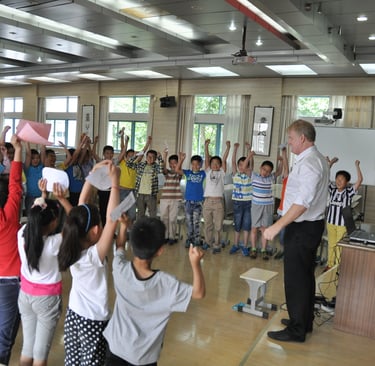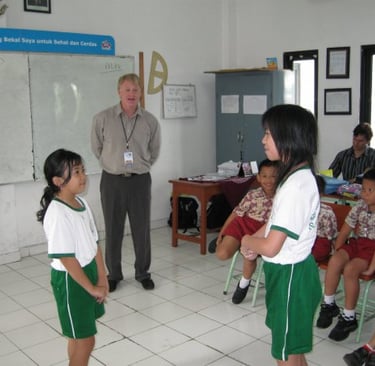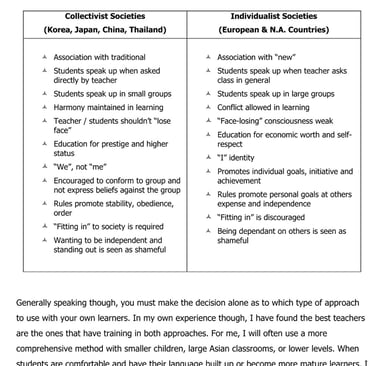



Pohang, South Korea, 2013
Surabaya, Indonesia, 2009


Zelenograd, Russia, 1995
Communicative language Teaching, focusing on language production works well in small adult groups, where the learners have some conversational skills and confidence.
It works because students tends to be mature enough to share the speaking time -- the main goal of CLT methodologies such as Task & Project-Based learning, PPP, and others.
Communicative vs. Comprehensive Teaching Methods
Communicative teaching , or CLT, started the whole TESOL industry in the 1980's. With the European economic investments in language teaching, consistent use of English on the continent, and travelling teachers that wanted to talk to locals.
Asian English teachers, told by school boards and directors to use a "Communicative approach", have struggled the last few decades.
Applying the European CLT approach in large classes of immature kids, with a more Asian approach to learning ("saving face", not speaking out, etc.) was stressful for local teachers, as well as foreigners that were trained to use a "communicative approach" in small groups of adults, in Europe.


For over 50 years, TEFL International, in over 40 global locations has been using a Comprehensive-Based Approach very successfully.
Based on Stephen Krashen's Natural Approach to language learning -- where a language student learns English the same way they learned their first language. Gaining comprehension and confidence skills, before moving into a communicative phase.
Sociologists have labelled "western & eastern" countries as " individualist and collectivist" societies. European and North American countries are considered more individualist societies, and many Asian countries are considered as more collectivist societies. Below, you can see some of the prime differences between these two types of societies.
A communicative approach requires students to take more risks with the language, works best in smaller classes, asks the students to be more independent, as well as debate and compete to use the language in class. This type of learning works well with individualist societies such as are found in many European classrooms.
On the other hand, a comprehensive approach creates a more collaborative and face-saving learning atmosphere, can be used easier with large classes, and builds the confidence of the learners together. It can sometimes have more success in more collectivist societies, whose educational viewpoint is more Confucianism based. I have seen a lot of success with this sort of approach in Korean, Chinese and Thai classrooms.
Nanjing, China, 2014


Zhongshan, China, 2013


